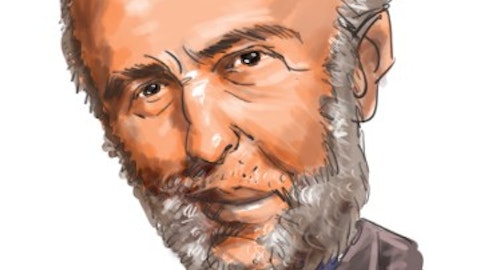Operator: Thank you, one moment for questions. Our next question comes from Damon DelMonte with KBW. You may proceed.
Damon DelMonte: Hey good morning guys. How’s it going today?
Eric Newell: Good, Damon.
Damon DelMonte: Good. So just a quick question on the credit and the outlook. Great commentary and color that was provided in the prepared remarks, the reserve, I think is pretty healthy, around $1.38. And just kind of wondering what your thoughts are on maintaining that level as we go through 2023 and kind of what you would expect for net charge-offs and kind of how we can kind of use that to triangulate into a loan loss provision as we look out over the next few quarters?
Eric Newell: I’ll let John talk about environment, and I can bring it back to the financials.
John Creech: The environment for us from a credit quality standpoint, it’s kind of difficult to characterize because you know what the headwinds look like. But our two largest markets, as we said on the call have 3% unemployment still. If you look at IPR, office and commercial, people in the Midwest are in the office and working, it doesn’t have those headwinds to the degree that the rest of the country does. You look at what we’re seeing in our portfolio and how we’re monitoring it and past dues remain low, overdrafts remain low. They’re almost abnormally low. The borrowing base compliance; we look at borrowing bases; the compliance with the borrowing base is good. Our loan covenant compliance and monitoring, we’re not providing a lot of waivers.
We’ve got favorable compliance with our borrowing bases. Borrower levels of liquidity remains strong. We’re continuing to see borrowers have strong level of liquidity. And what I hear when I look at the economy and listen to our other earnings calls, particularly from the larger banks is that the expectation is kind of muted. So from a credit cost standpoint, it seems odd that we sort of see the continuance of the trend we’ve had for the last year.
Eric Newell: So Damon, when you put all that together from a budgeting perspective, we still look at 20 basis points on average loans for provisioning. But when you listen to John and I could see us coming in lower than that based on what we’re seeing today in the economic environment and what we’re seeing in our portfolio, that certainly could change over the year based on our current coverage and our current credit quality from an ACL point of view, I think that qualitative aspects of the ACL taking into account that uncertainty. But the quantitative are really showing the lack of loss that we have flowing through our model.
Damon DelMonte: Got it. Okay, that’s helpful. I appreciate that color. And then with regard €“ just kind of a technical question here, but with regards to the impact on the tax rate this quarter because of the timing which related to the solar credit. So should we anticipate like the low end of your 14% to 16% range in the first quarter because you get a bigger benefit? Or is that just embedded in the overall guidance?
Eric Newell: That’s embedded in the overall forecast.
Damon DelMonte: Got it. Okay, all right. That’s all that I had for now. Thank you very much.
Operator: Thank you, one moment for questions. Our next question comes from Terry McEvoy with Stephens. You may proceed.
Terry McEvoy: Good morning everyone.
Eric Newell: Good morning.
Brad Elliott: Good morning, Terry.
Terry McEvoy: I guess we’ve talked about the deposit betas were below the industry last year, and that was the playbook that you talked about. I guess my question is what deposit betas are you using in your margin outlook? And if we do get a couple of rate hikes, how would that impact the beta assumption?
Eric Newell: Right now, we’re using a terminal beta of 40% in our budgeting for 2023. I don’t know if continued rate hikes would alter that assumption at this point, that is something that we talk about in our asset liability committee every month, and we’ll continue to monitor that.
Terry McEvoy: Thanks. And maybe as a follow-up, maybe could you discuss how you’re using the digital bank as an overall funding tool?



